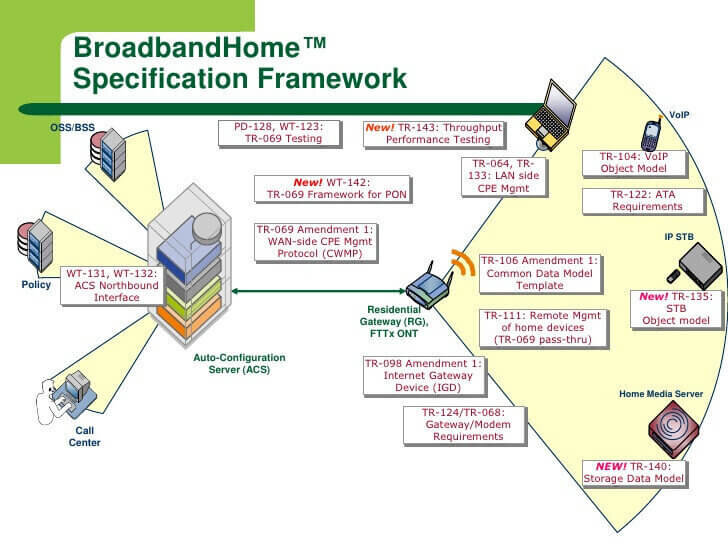What is TR-143?
TR-143 Protocol Guide | Comprehensive Overview of TR-143 for ISPs and Service Providers

Take Control with Active Monitoring and Diagnostics

TR-143 - What Is It All About?
TR-143 helps operators determine whether a problem lies within the operator’s network or the customer’s home network. Defined by the Broadband Forum, TR-143 provides guidelines for active monitoring and diagnostics. Officially titled “Enabling Network Throughput Performance Tests and Statistical Monitoring,” TR-143 includes tests designed to measure the performance of a given link in real time using the TR-069 Endpoint as a probe.
In the context of TR-143, active monitoring allows for the measurement of performance metrics essential for establishing Service Level Agreements (SLAs) for guaranteed and business-class service offerings. It involves actively transmitting or receiving data within a managed ecosystem and supports both network-initiated and CPE-initiated diagnostics.
The key benefit of active monitoring is its ability to define the performance of service paths or path segments, depending on the network segment being assessed.
TR-143 Data Model
TR-143 is a data model that defines how devices in a telecommunications environment collect and report performance data. TR-143 provides a common format for reporting performance data, which makes it easier for telco brands and ISP providers to exchange information and troubleshoot problems. TR-143 also enables telcos and ISPs to collect performance data from a variety of devices, including routers, switches, and servers. TR-143 is important for telcos and ISPs because it helps to improve customer service by providing better visibility into the network. In addition, TR-143 can help telcos and ISPs to reduce operational costs by simplifying the exchange of performance data.
TR-143 Speed Test
TR-143 is an important speed test for telco brands and ISP providers. It helps to ensure that customers are getting the best possible speeds from their broadband connection. TR-143 also provides valuable information for ISPs about the performance of their networks. The test is conducted by measuring the time it takes to download a file from a server. TR-143 is a valuable tool for both telcos and ISPs because it helps to ensure that customers are getting the best possible speeds from their broadband connection. TR-143 also provides valuable information for ISPs about the performance of their networks. TR-143 is an important speed test for telco brands and ISP providers. It helps to ensure that customers are getting the best possible speeds from their broadband connection.
TR-143 can help telco brands and ISP providers to:
Evaluate service levels and identify areas for improvement
Assess the impact of changes on network performance
Monitor compliance with service level agreements (SLAs)
Generate reports for marketing and regulatory purposes TR-143 speed tests are typically conducted between the customer premises equipment (CPE) and a test server located at the ISP's point of presence (POP).
Quality of Experience (QoE) - Always More Than The Sum Of Its Parts
Quality of Experience (QoE) - the user’s subjective perception of how a service is presented and performing to him - is closely connected to the application layer. Quality of Service (QoS) indicators on the other hand are objective parameters that reflect the delivered service quality.
Improving QoE is always an end-to-end process, meaning that the entire service path between source and destination needs to be assessed. QoE depends on the QoS of all the service components making up the service chain. But QoE is even “more” than just the sum of its QoS components. Why this? Mainly because QoS-related parameters have different effects on the experience of different applications! Therefore it is arguable that the user experience can be inferred solely from network performance parameters (e.g. packet loss, packet delay, etc.). Nevertheless network operators can benefit from having the ability to measure user level performance metrics such as transaction throughput and response time in a proactive or an on-demand basis.
Our TR-143 Based Products
All Axiros products can be deployed and operated “On-Premises” or “as a Service”.



